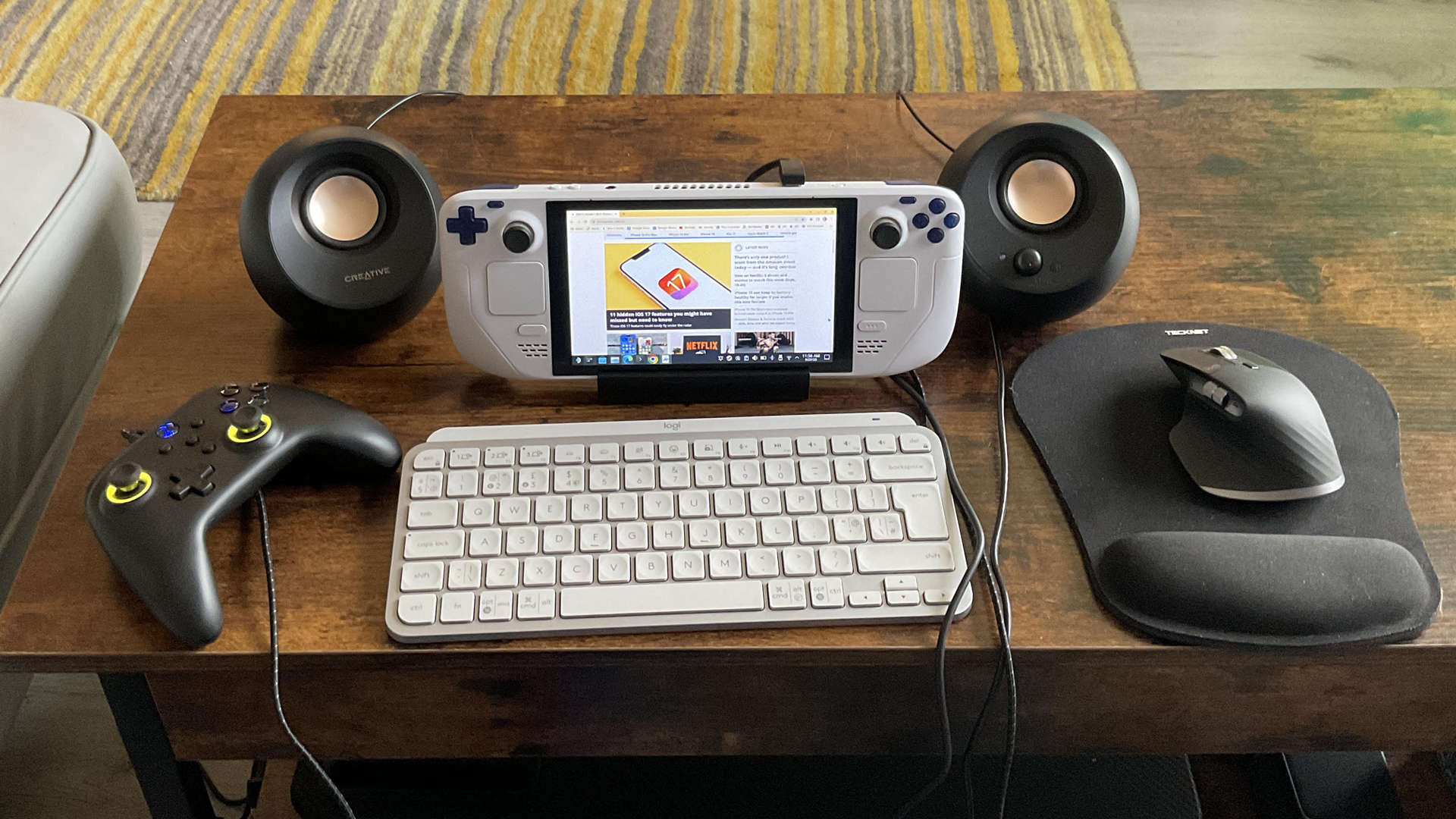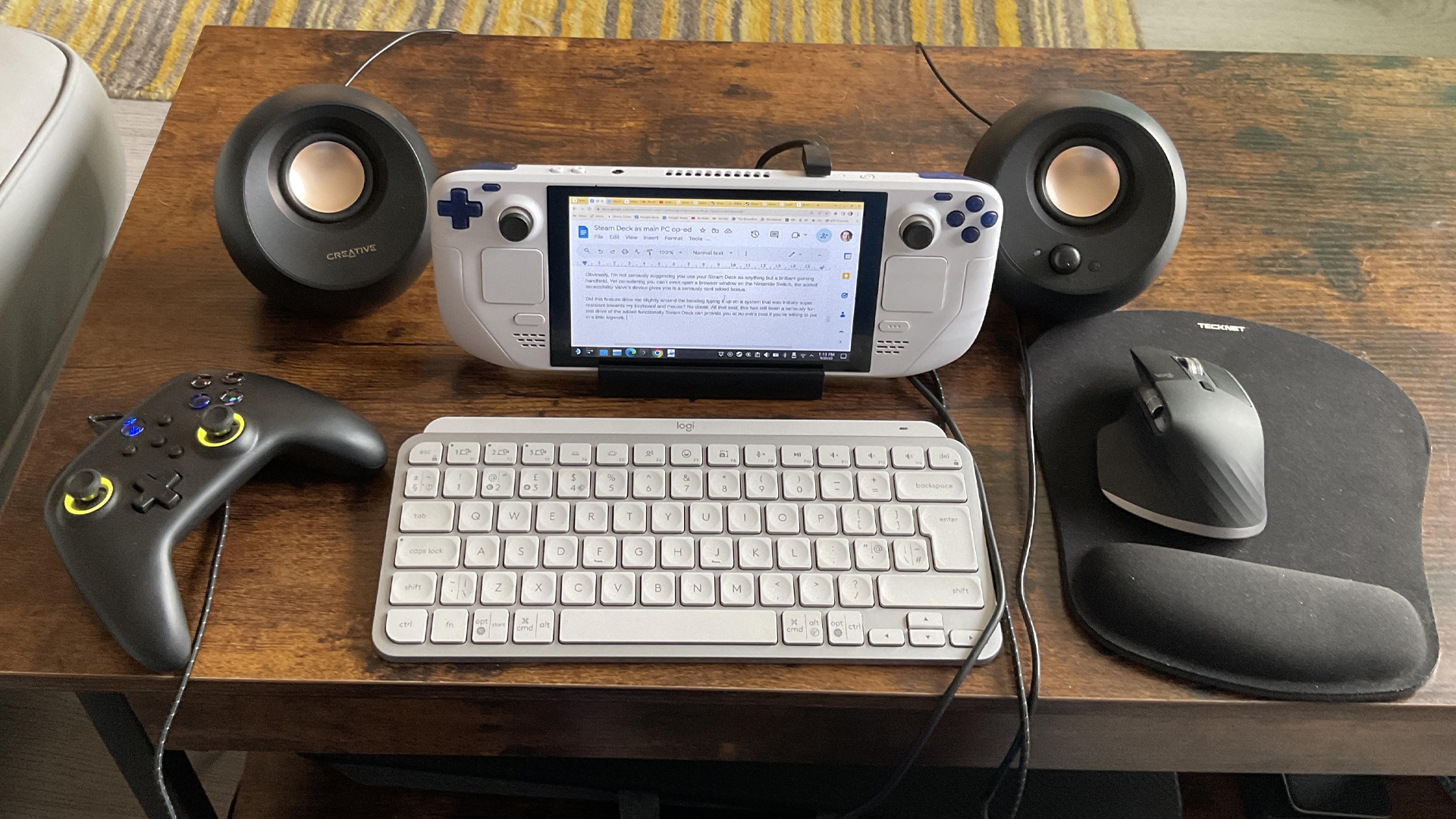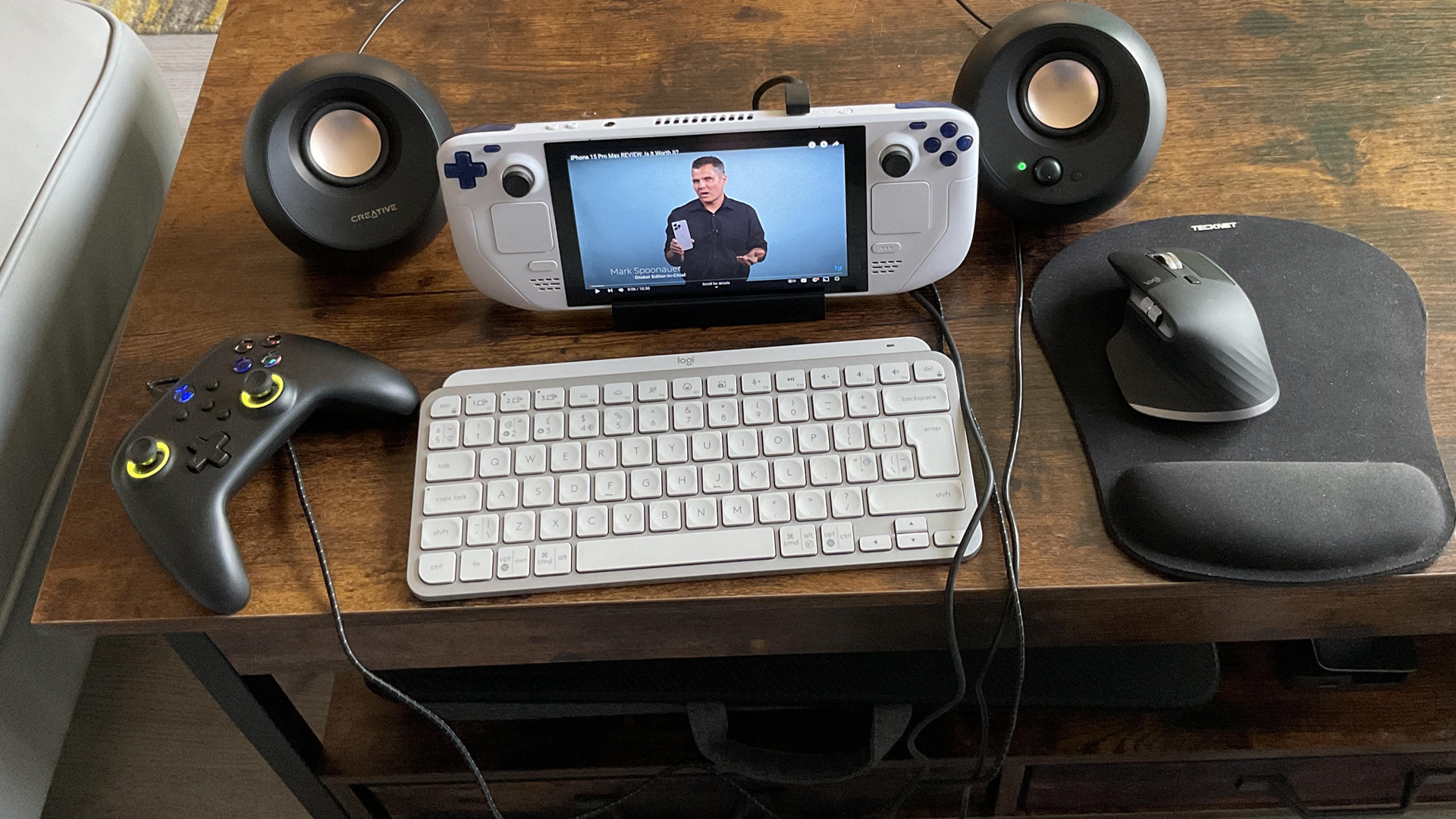I used the Steam Deck as my main work PC for a day — it was a glorious, semi-successful disaster
Steam Deck can technically function as a Linux-powered mini PC, but I wouldn’t overly recommend using Valve’s gaming handheld as a laptop replacement

Before we really get into this bizarre experiment, let me make something perfectly clear: Steam Deck is awesome, but you probably shouldn’t use it as a laptop replacement.
To counter that statement, it’s hugely impressive that the Linux-based software powering Valve’s handheld PC means (with a few slightly fiddly tweaks), it can totally function as a teeny laptop. Well, as long as you own a wireless keyboard and mouse to connect it with.
Oh, and a Steam Deck dock is absolutely essential. Unlike the Nintendo Switch OLED, the Deck won’t stand up on its own without external support, as it lacks a kickstand. But if you buy the dock I recommend (the Sabrent 6-Port Docking Station for Steam Deck for $30 at Amazon), you’re all set to turn the breakout gaming device into a semi-functioning PC.
Such is my commitment to this slightly wrong-headed experiment, I’m actually typing out this feature through Google Docs on my Steam Deck. I won’t lie, it’s hardly a friction-free process, and it’s not exactly practical.
But hey, the world can be a cold and demoralizing place at times, so why not write an irreverent piece about using one of the best handheld gaming consoles as a desktop replacement? Even though your daily work functions will be heavily impacted by using a 7-inch, 720p screen.
For full transparency, I’ll admit turning my Deck into my main work PC for a day has been a bit of a logistical nightmare. Yet it’s also been kind of a giggle.
Can Steam Deck function as a mini PC?

Right now, I’m typing this very sentence in G-Docs with Google Chrome’s zoom feature set to 175%. I have 20/20 vision with my contact lenses in, but c’mon, this is still a small screen we’re dealing with.
Get instant access to breaking news, the hottest reviews, great deals and helpful tips.
The main hurdles in getting the Deck to function as a working PC involves switching between the handheld’s Gaming and Desktop modes. Pairing my Logitech MX Keys Mini keyboard and Logitech MX Master 3S is reasonably easy when playing in Game mode, but it’s a bit of a nightmare when switching over to the desktop experience.
To get one of the best wireless keyboards and to get my pick for the best wireless mouse to play ball with the Deck in Desktop mode, I have to jump through several excruciating hoops that involve using both the handheld’s not-exactly-reliable trackpads and its onscreen keyboard — which you bring up by pressing the Steam menu button located on the lower left of the device alongside with the X input.
After that, I encounter a semi-torturous experience of using the Deck’s Application Launcher to separately find the system's Bluetooth settings again. That’s because even if you pair a mouse and keyboard in Game mode, Valve’s machine forgets your devices as soon as you switch to Desktop mode, which means you need to reconnect your peripherals. And honestly, said process is about as painful as downing a gin and tonic topped with a splash of sulphuric acid.

Once you get your keyboard and mouse on the same page as Steam Deck in Desktop mode though, the whole process becomes considerably less miserable. So much so, I was able to edit several articles for my colleagues through the Deck, write this piece on the handheld and even watch Mark Spoonauer’s excellent iPhone 15 Pro Max review via YouTube on my new favorite gaming device.
Obviously, I’m not seriously suggesting you use your Steam Deck as anything but a brilliant gaming handheld. Yet considering you can’t even open a browser window on the Nintendo Switch, the added accessibility Valve’s device gives you is a cool bonus.
Did this feature drive me slightly around the bend typing it up on a system that was initially super resistant towards my keyboard and mouse? No doubt. All that said, this has still been a seriously fun test drive of the added functionally Steam Deck can provide you at no extra cost, if you’re willing to put in a little legwork.
More from Tom's Guide
- Steam Deck review: The Nintendo Switch for adults
- I owe every Steam Deck owner a massive apology
- Steam Deck has stopped me obsessing over frame rates

Dave is a computing editor at Tom’s Guide and covers everything from cutting edge laptops to ultrawide monitors. When he’s not worrying about dead pixels, Dave enjoys regularly rebuilding his PC for absolutely no reason at all. In a previous life, he worked as a video game journalist for 15 years, with bylines across GamesRadar+, PC Gamer and TechRadar. Despite owning a graphics card that costs roughly the same as your average used car, he still enjoys gaming on the go and is regularly glued to his Switch. Away from tech, most of Dave’s time is taken up by walking his husky, buying new TVs at an embarrassing rate and obsessing over his beloved Arsenal.
 Club Benefits
Club Benefits





